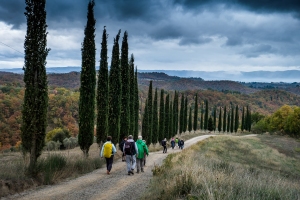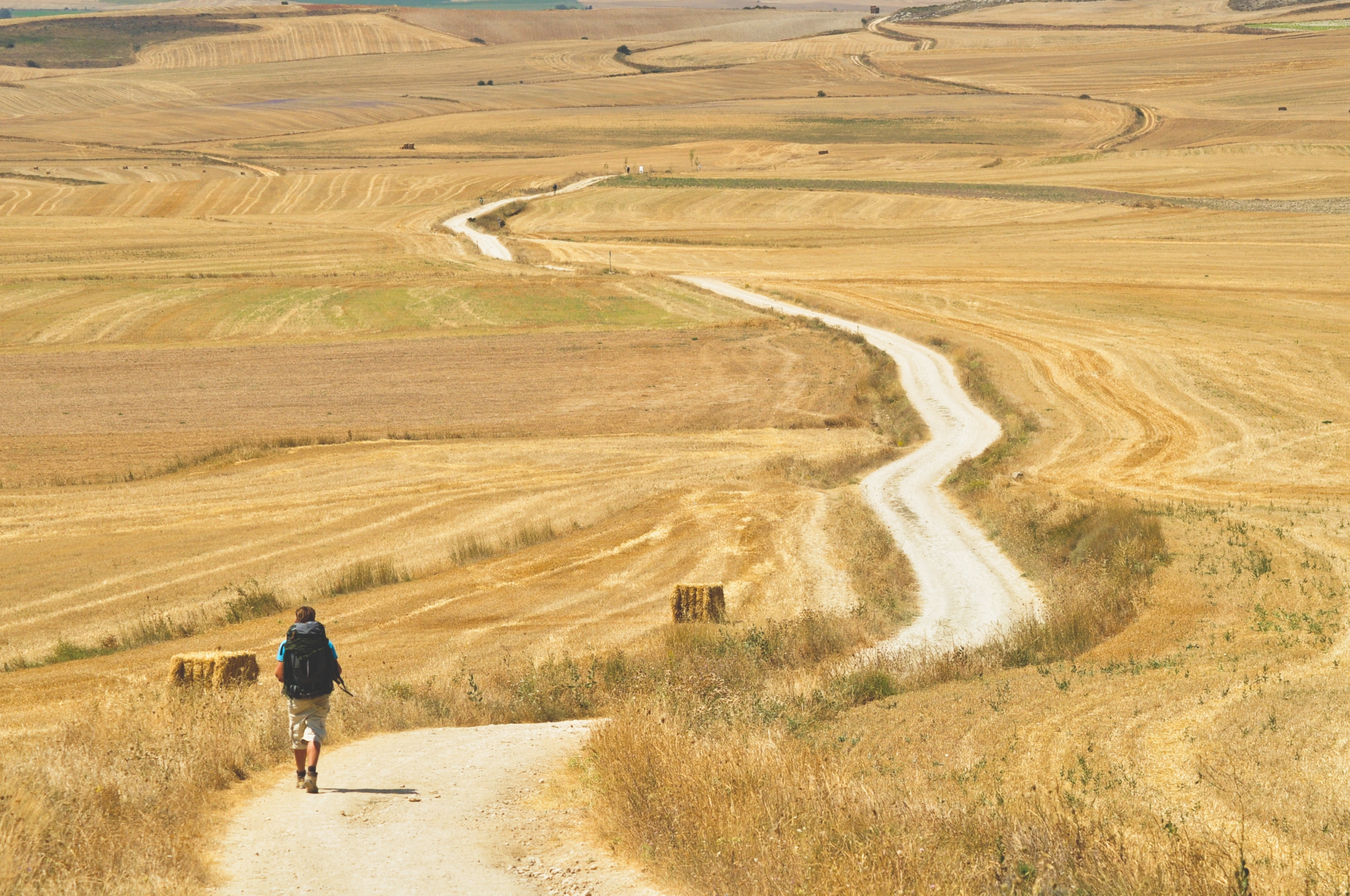In a world shaped by acceleration, walking slowly—especially over long distances—can become an act of quiet resistance. Far from being a leisurely stroll, long-distance pilgrimage today is increasingly embraced as a mindful practice. While historically associated with religious devotion, contemporary walking pilgrimages intersect with neuroscience, psychology, and philosophy.
Thousands now choose to walk not for doctrinal reasons, but to address anxiety, burnout, grief, or simply to reconnect with themselves. The act of walking becomes both a passage and a pause—restorative, reflective, and grounded in embodied experience.
Major Routes: Santiago, Francigena, and Beyond
The Camino de Santiago, with over 400,000 participants each year, is Europe’s most well-known walking pilgrimage. The most frequented section, the Camino Francés, begins in Saint-Jean-Pied-de-Port, traversing the Pyrenees and varied Spanish landscapes before reaching Santiago de Compostela.
In Italy, the Via Francigena stretches from Aosta to Rome and down to Santa Maria di Leuca, crossing historic towns and pastoral countryside. Less trafficked than the Camino, it offers a quieter journey through the architectural and cultural heart of the Italian peninsula. The route is one of the few officially recognized European Cultural Routes by the Council of Europe.
Other trails, such as the Cammino di San Benedetto, the Cammino Materano, and the Cammino dei Briganti, provide equally rich experiences on lesser-known paths.
Walking to Heal: Psychological and Physiological Benefits
Extended walking, particularly in natural settings and at a steady rhythm, activates the parasympathetic nervous system and lowers cortisol levels—the body’s primary stress hormone. Research published in Frontiers in Psychology underscores the positive effects of forest bathing and meditative walking on mental health.
Walking also stimulates neuroplasticity. A Stanford University study found that walking boosts creative thinking by up to 60% compared to sitting. Unlike hiking for sport, pilgrimage is not about physical performance. It is about presence in motion.
Movement as Meditation

In a pilgrimage, each step carries intentionality. It’s not tourism, nor exercise. It is a secular ritual in motion, grounded in solitude and reflection. Many walkers describe entering a flow state, where thoughts align with breath and step. The repetitive rhythm fosters clarity and introspection.
As French philosopher Frédéric Gros writes in A Philosophy of Walking, “To walk is to be fully present; it is the opposite of being transported.”
Voices from the Camino
Marta, 41, walked the Via degli Dei after the death of a loved one:
“The pain didn’t disappear, but I learned to walk through it.”
Luca, a former executive who walked the Camino after leaving his job:
“I didn’t find answers, but I learned the value of asking better questions.”
Secular Pilgrimage: A Spirituality Without Doctrine
Today, many approach pilgrimage as a non-religious experience. The path becomes a kind of open-air sanctuary. The spirituality of walking lies in its elemental simplicity—step, breath, landscape, silence. It invites a connection with the self and the environment, not necessarily with a doctrine.
Routes like the Cammino dei Briganti offer remote, meditative landscapes where transformation unfolds far from crowds or rituals.
Walking as Clinical Practice
In Switzerland, the Walk and Talk initiative combines psychotherapy with walking in alpine terrain. The side-by-side motion helps break down emotional barriers more naturally than sitting face-to-face.
In Japan, shinrin-yoku—translated as “forest bathing”—is an officially recognized preventive therapy. Endorsed by the Ministry of Health, it’s supported by clinical research linking it to improved sleep, lower blood pressure, and enhanced immune function.
Preparing for a Therapeutic Pilgrimage
Essential Gear:
- Well-broken-in walking shoes
- Backpack under 10 kg
- Waterproof poncho or cloak
- Journal for daily reflections
Mental Preparation:
The right mindset outweighs physical conditioning. Expect fatigue, solitude, and unpredictability. Learn to surrender control, to embrace discomfort, and to listen—to yourself, to the path, to silence.
The Journey Is the Goal
In a culture of instant notifications and performance metrics, pilgrimage offers a break from forced productivity. Walking with no destination beyond the act itself reintroduces us to forgotten dimensions: presence, quietude, and intentional slowness.
A pilgrimage doesn’t offer resolution. It invites transformation. Step by step, it teaches that arrival is not always the goal. Often, the act of walking—and choosing to begin—is enough.





